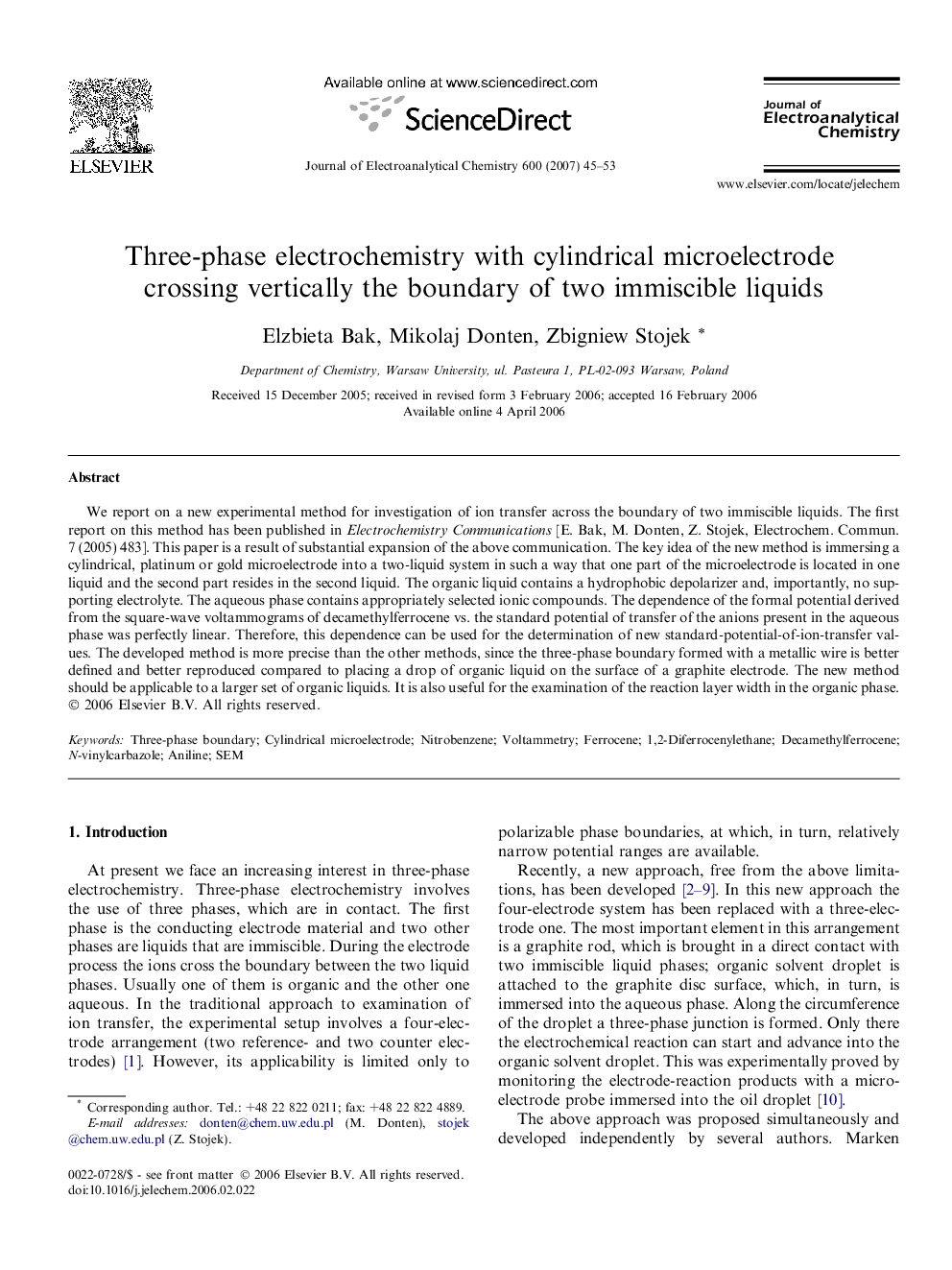| Article ID | Journal | Published Year | Pages | File Type |
|---|---|---|---|---|
| 220999 | Journal of Electroanalytical Chemistry | 2007 | 9 Pages |
We report on a new experimental method for investigation of ion transfer across the boundary of two immiscible liquids. The first report on this method has been published in Electrochemistry Communications [E. Bak, M. Donten, Z. Stojek, Electrochem. Commun. 7 (2005) 483]. This paper is a result of substantial expansion of the above communication. The key idea of the new method is immersing a cylindrical, platinum or gold microelectrode into a two-liquid system in such a way that one part of the microelectrode is located in one liquid and the second part resides in the second liquid. The organic liquid contains a hydrophobic depolarizer and, importantly, no supporting electrolyte. The aqueous phase contains appropriately selected ionic compounds. The dependence of the formal potential derived from the square-wave voltammograms of decamethylferrocene vs. the standard potential of transfer of the anions present in the aqueous phase was perfectly linear. Therefore, this dependence can be used for the determination of new standard-potential-of-ion-transfer values. The developed method is more precise than the other methods, since the three-phase boundary formed with a metallic wire is better defined and better reproduced compared to placing a drop of organic liquid on the surface of a graphite electrode. The new method should be applicable to a larger set of organic liquids. It is also useful for the examination of the reaction layer width in the organic phase.
